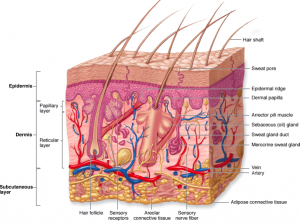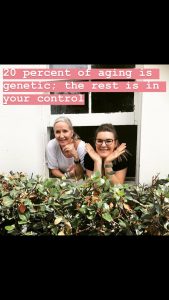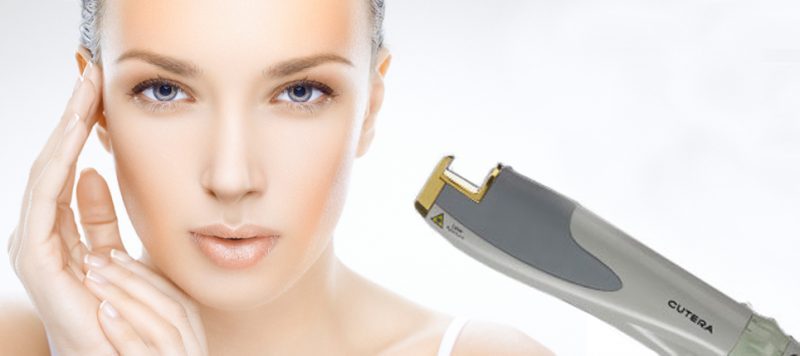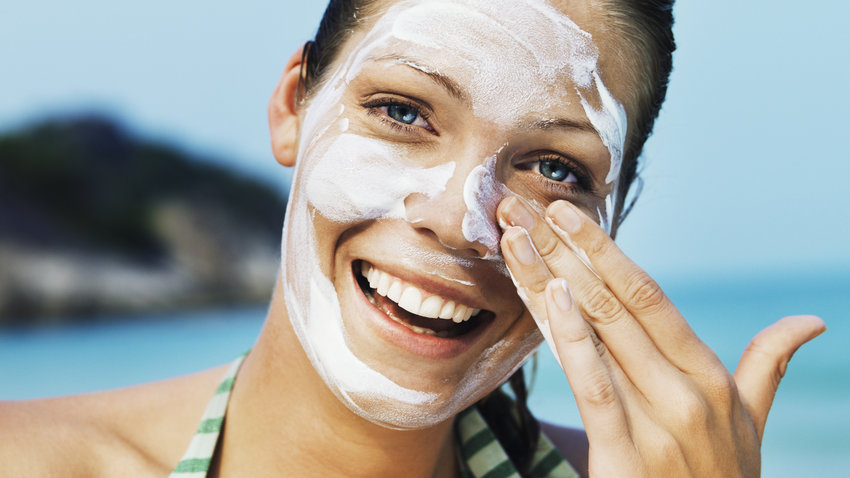Helena refreshed her knowledge on skin.
Here is what she learnt…

Skin education course – part 1
I recently embarked on refreshing my knowledge of everything skin; on how it functions from a molecular level, the ageing process (eeeekkk), and on how to get your skin looking its healthiest and best using the correct treatments, products, and supplements.
Let me share with you just a few fun facts on how our skin functions and the natural aging process. I will also go through with you some skin tips and treatments on how to age well. If we are privileged enough to age, we might as well do it in our own chosen way.
We all know that the skin is our largest organ. The outer layers of our skin have specialised cells to act as a physical and biological barrier to the environment. Adults can carry approximately 3.6 kilograms and 2 square meters of skin.
The Stratum Corneum is the most superficial layer of the skin. It is what we see and contextualize (and usually criticize). It is where our skin cells finish their journey from their conception in the basal layer by the stem cells. This is where the keratinised ‘skeleton’ of the dead cell is found. It creates a strong barrier around the body and is our first line of defense against external aggressors and where cellular communication takes place.
The Stratum Corneum communicates to the Stem Cells and Melanocytes to constantly maintain balance within the skin. The role of stem cells is to re-divide and produce healthy epidermal cells. If the communication is impaired, then the Stem Cells will produce impaired epidermal cells. Melanocytes cells are responsible for producing Melanin which is our skins protection against UV radiation. These essential communication pathways only exist in healthy hydrated skin.
Fun Fact: Unhealthy skin ages earlier and at a faster rate than it should be.
Not so fun fact: the time taken for a cell to be born in the basal cell layer to when it is sloughed off in the stratum corneum layer is called a skin healing cycle, as we age and cellular action slows, so does this process.

20 years old – 1 month
30 -40 years old – 2 months
50+ years old – 3 months. This also means that a mature skin will show results of treatments and products more slowly because the cells are turning over at a reduced rate.
The acid mantle plays a very important role in our skin’s health and function. It is comprised of a layer of water and oil – Essential Fatty Acids (EFA’s) from the cell membrane and water (cytoplasm) from within the cell. As the cell decomposes the oil and water is released forming a protective layer on the skin. The Acid Mantle is our main protector against water loss from the deeper layers of the skin (dehydration). It also protects against pathogens and harmful bacteria from entering the skin. When the ph. of the Acid Mantle is between 4.5 and 6.5 (acidic) it creates an effective barrier against irritants. The Acid Mantle also slows down the absorption of active ingredients into the skin, so they do not harm the skin and therefore working more effectively.
Now to the nitty gritty. Collagen, Elastin and Hyaluronic Acid
Collagen, Elastin and Hyaluronic Acid are our structural proteins produced by Fibroblasts. The function of Fibroblasts is to breakdown damaged Collagen & Elastin so that they can re-divide and create new Collagen & Elastin which equates to firm, plump skin!!!!
The role of collagen, elastin & hyaluronic acid.
Collagen is thick, strong, resilient and are relativity inflexible fibres which are responsible for keeping the skin ‘in place’. Lack of collagen can lead to visible ‘drooping’ of the skin. Noooooooooo
Elastin are fine elastic fibres that work alongside collagen, so the skin has the ability to ‘snap back’ into place. Try the pinch test……..
Hyaluronic Acid – Bathes the collagen and Elastin giving the skin its hydration and density. Ahhhh Plumpness
Sad fact: Fibroblast re-division ceases between 18-20 years old, from the age of 20-25 and onwards, Collagen, Elastin & Hyluronic Acid production levels decline by 2% each year. This means that the remaining fibroblasts are responsible for producing Collagen, Elastin & Hyaluronic Acid. And even sadder and scarier is that when fibroblasts run out of damaged Collagen & Elastin to breakdown, they will begin to degrade healthy Collagen & Elastin too.
It’s not all doom and gloom, there is some good news! We can create damaged Collagen & Elastin cells to stimulate Fibroblasts and keep them happy, we can also assist in the production of healthy skin cells so our skin will look and feel its optimum healthy best.
Pheew all is not lost. All will be revealed in Part 2







